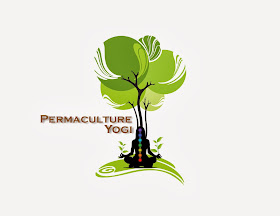As should be clear from the above quote from the beginning of Bill Mollison’s seminal Designer’s Manual, “Permaculture”- a corruption of “Permanent Agri-Culture” – came in on the back of Rachel Carson’s Silent Spring, Paul Ehrlich’s Population Bomb and the 1972 Club of Rome’s Limits to Growth. The world is on an unsustainable path which can only end badly unless we radically change direction. Peak Oil and Climate change, combined with loss of topsoil, fresh water and biodiversity, will mean imminent doom for humanity and the biosphere unless we revert to a much simpler life-style, running only off the ambient solar interest that accumulates through biological processes each day, rather than delving ever deeper into the Earth’s precious capital stores of fossil energy and other non-renewable resources. I think it is critical to understand this: without a Malthussian understanding of the world and a deeply conservative ethic that resists economic development and idealizes both the natural and the traditional, permaculture could never have come into existence.
Farming in particular was deemed to be in need of change. Rather than exterminating the forests and using chemical fertlisers and waging war on Nature with pesticides to grow our food, Permaculture would provide a design system that allowed us how to do things more in tune with natural rhythms and lead us to a gentler and more sustainable way of life. By closely observing natural eco-systems, in particular forests, we would be able to replace unsustainable resource use with small-scale systems that could sustain us without growth into the future.
Often defined as “sustainable design based on natural systems” it began in the late 1970s as a response to the excesses of industrial agriculture, advocating much more use of trees and perennials planted in polycultures as food crops, use of elements of a system in all their functions, and an emphasis on recycling, water harvesting from rooftops and also from swales, water catchment channels cut along the contours of the land; and “intermediate” technology such as small-scale renewables and low-tech DIY devices which might include for example compost toilets and pedal-powered washing machines.
But here already we hit the first obstacle, not a speed-bump, but a brick wall: Permaculture’s embrace of “design-by-nature” is an oxymoron, and the beginning and end of the concept is based on the naturalistic fallacy, as Harper points out in Cleaning out the Stables:
Peter Harper’s critiques deal a knock-out punch: permaculture doesn't work. While claiming to be developing pockets of intelligent “natural” design which act as prototypes for an alternative to the modern industrial world, the permaculture movement lives in the fantasy world of Big Rock Candy Mountain:
More @ The Cult of Perma | SkeptEco:

No comments:
Post a Comment